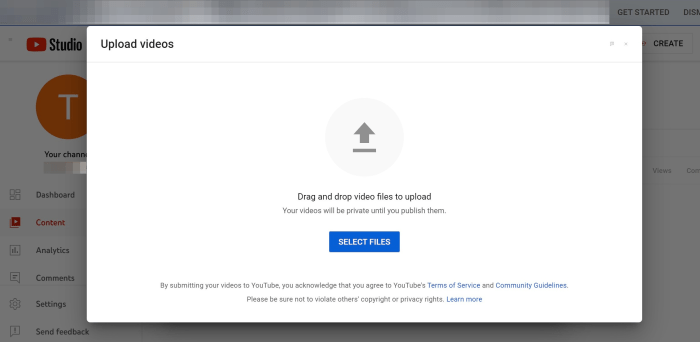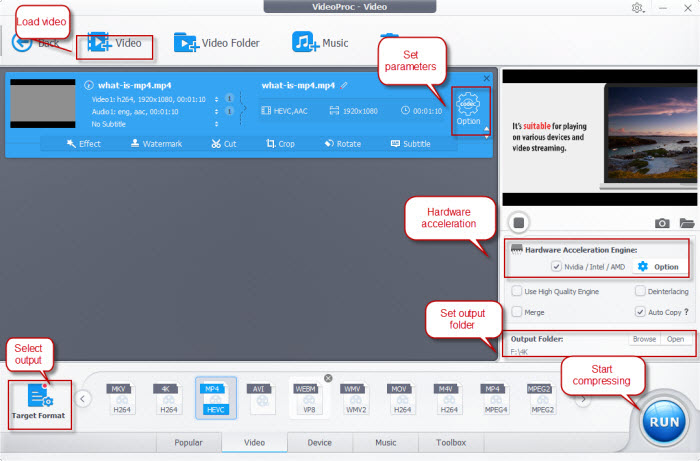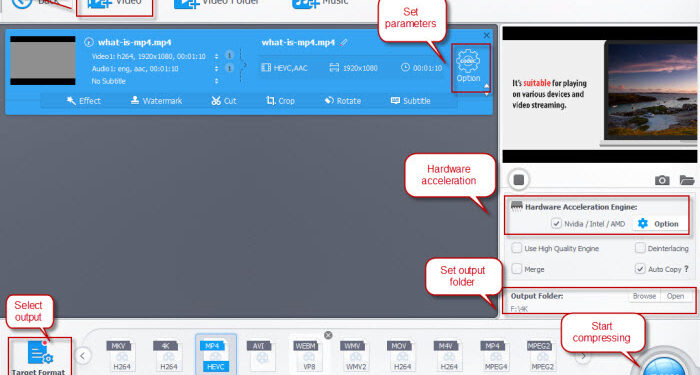Exploring the realm of sharing high-resolution videos online opens up a world of possibilities. From choosing the right platform to implementing compression techniques, this journey is filled with insights to enhance your video-sharing experience.
Let's dive into the realm of high-resolution video sharing and discover the best practices to make your videos stand out in the digital landscape.
Choosing the Right Platform for Sharing High-Resolution Videos
When it comes to sharing high-resolution videos online, selecting the right platform is crucial to ensure your content looks its best and reaches your intended audience effectively. Different platforms offer various features and compatibility levels, so it's essential to consider a few key factors before making your decision.
Platform Comparison:
- YouTube: Known for its widespread reach and user-friendly interface, YouTube supports high-resolution videos up to 8K. It also offers robust video compression technology to maintain quality.
- Vimeo: Popular among filmmakers and artists, Vimeo provides excellent video quality with support for 4K resolution. It caters more to a creative audience seeking high-quality content.
- Wistia: Ideal for businesses and marketers, Wistia focuses on video hosting for marketing purposes. It supports high-resolution videos and offers detailed analytics for better audience insights.
Key Features to Look For:
- Resolution Support: Ensure the platform supports the resolution you intend to upload, whether it's 4K, 8K, or other high-definition formats.
- Compression Technology: Look for platforms with advanced compression algorithms to maintain video quality while optimizing file sizes for faster streaming.
- Playback Compatibility: Check if the platform is compatible with popular high-resolution formats like H.264, HEVC, or VP9 for smooth playback across devices.
Importance of Platform Compatibility:
Platform compatibility with high-resolution formats is essential to ensure your videos are displayed correctly without losing quality during playback. Choosing a platform that supports the latest video codecs and resolutions can enhance the viewing experience for your audience and showcase your content in the best possible light.
Compression Techniques for Maintaining Video Quality
When dealing with high-resolution videos, it is essential to use compression techniques to reduce file size without compromising the video quality. Compression helps in optimizing the video for online sharing, streaming, and storage while maintaining a balance between quality and file size.
Benefits of Using Compression Techniques
- Reduced File Size: Compression reduces the size of high-resolution videos, making them easier to share and store.
- Improved Streaming: Compressed videos load faster during online streaming, providing a better viewing experience for the audience.
- Cost-Effective: Smaller file sizes result in reduced bandwidth and storage costs for online platforms.
Step-by-Step Guide on Compressing Videos Without Losing Quality
- Choose the Right Software: Select a reliable video compression tool that supports high-quality output.
- Adjust Video Settings: Modify video parameters such as resolution, bitrate, and frame rate to optimize quality and file size.
- Select the Compression Format: Choose a suitable compression format like H.264, HEVC, or VP9 based on your requirements.
- Preview and Test: Preview the compressed video and ensure that the quality meets your standards before sharing or uploading.
Impact of Different Compression Formats on Video Quality
Each compression format has its own characteristics that affect the overall video quality. Understanding these differences can help you choose the most suitable format for your high-resolution videos.
H.264: Widely used for online streaming, H.264 provides good quality at lower bitrates, making it ideal for sharing videos online.
HEVC (H.265): Offers better compression efficiency than H.264, resulting in smaller file sizes without compromising quality, but may require more processing power for playback.
VP9: Developed by Google, VP9 is known for its high-quality compression, making it a popular choice for platforms like YouTube.
Uploading and Sharing Strategies for High-Resolution Videos
When it comes to sharing high-resolution videos online, the process of uploading and sharing plays a crucial role in ensuring the quality and accessibility of the content. Here, we will explore some effective strategies for handling large video files efficiently and optimizing their distribution on various platforms.
Tips for Uploading Large High-Resolution Videos Efficiently
- Utilize a reliable and high-speed internet connection to avoid interruptions during the upload process.
- Consider using file compression tools to reduce the size of the video without compromising quality.
- Choose the right file format that is compatible with the platform you intend to share the video on.
- Upload videos during off-peak hours to ensure faster upload speeds and smoother processing.
Best Practices for Sharing High-Resolution Videos on Social Media Platforms
- Optimize video titles, descriptions, and tags with relevant s to improve searchability and reach a wider audience.
- Engage with your audience by responding to comments, messages, and feedback to build a community around your video content.
- Create teaser clips or trailers to generate interest and drive traffic to the full high-resolution video.
- Utilize analytics tools provided by social media platforms to track the performance of your videos and adjust your sharing strategy accordingly.
Ensuring Fast and Seamless Streaming of High-Resolution Videos Online
- Host your videos on a reliable and high-bandwidth streaming platform to ensure smooth playback without buffering delays.
- Optimize video encoding settings to strike a balance between file size and video quality for efficient streaming.
- Implement adaptive streaming technology to deliver different quality versions of the video based on the viewer's internet connection speed.
- Consider using content delivery networks (CDNs) to distribute your video content globally and reduce latency for viewers in different regions.
Security Measures to Protect High-Resolution Video Content

Securing high-resolution video content online is crucial to prevent unauthorized access, piracy, or leaks, especially for valuable or sensitive video materials.
Importance of Encryption Methods
Encrypting high-resolution videos is a fundamental security measure to protect the content from being intercepted or accessed by unauthorized users. Encryption algorithms scramble the video data, making it unreadable without the corresponding decryption key.
- Utilize strong encryption algorithms like AES (Advanced Encryption Standard) to safeguard video files effectively.
- Implement end-to-end encryption to ensure that only the intended recipient can decrypt and access the high-resolution video content.
- Regularly update encryption keys and protocols to stay ahead of potential security threats and vulnerabilities.
Recommendations for Secure Sharing
When sharing high-resolution videos with specific individuals or groups, it is essential to follow secure practices to maintain confidentiality and integrity.
- Use secure file sharing platforms or services that offer encryption features and access controls to limit who can view or download the video content.
- Require password protection for shared videos to add an extra layer of security and ensure that only authorized recipients can access the files.
- Avoid sharing video links publicly or through unsecured channels to reduce the risk of unauthorized distribution or piracy.
Epilogue

As we conclude our exploration of sharing high-resolution videos online, remember that quality and security are paramount. By following the strategies Artikeld, you can ensure your videos reach the audience in all their high-resolution glory.
Commonly Asked Questions
How can I upload large high-resolution videos efficiently?
To upload large videos efficiently, consider using cloud storage services like Google Drive or Dropbox and share the video link instead of uploading directly.
What are the best practices for sharing high-resolution videos on social media platforms?
When sharing on social media, ensure the video is in the appropriate format for each platform to maintain quality. Use eye-catching thumbnails and engaging captions to attract viewers.
How can I ensure fast and seamless streaming of high-resolution videos online?
To ensure fast streaming, optimize your videos for web and mobile viewing by choosing the right video player and hosting platform that supports high-resolution content.
What encryption methods can I use to safeguard my high-resolution video content?
You can use AES encryption for your videos to protect them from unauthorized access. Implementing DRM (Digital Rights Management) solutions can also add an extra layer of security.





